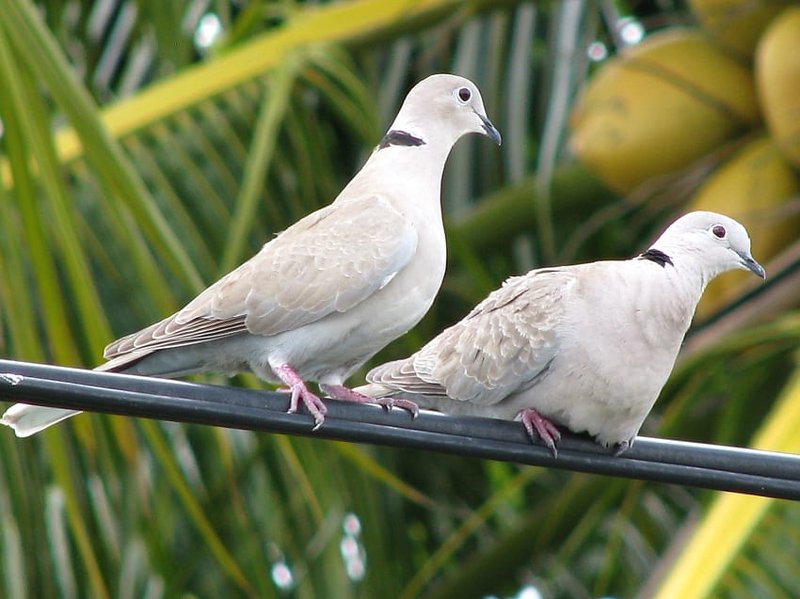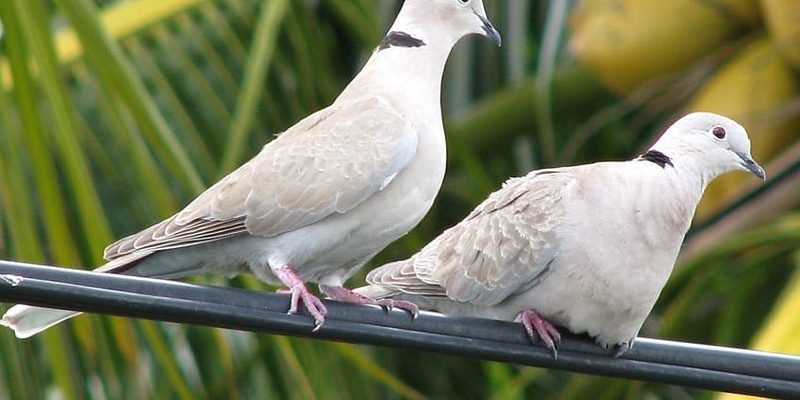
Imagine you’re at a party where the music suddenly changes from rock to classical. You’d probably shift gears and adjust your dance moves, right? Well, that’s how these doves roll too! They’ve learned to thrive in various environments, whether it’s bustling cities or quiet rural areas. Let’s dive into how these doves adapt and find their place in the world around them.
Understanding the Eurasian Collared Dove
First, it’s essential to know a bit about these doves. The Eurasian Collared Dove is medium-sized, typically grayish with a distinctive black crescent or “collar” on the back of its neck. They have a soft cooing call that can be quite soothing. Not only are they visually appealing, but they’ve got personalities that are just as fascinating.
These doves originated from Eurasia, but they’ve made their way across the globe. How did this happen? They’re excellent travelers! Their adaptability allows them to colonize new areas quickly. You might spot them in parks, backyards, or even urban settings. Their ability to thrive in diverse habitats is key to their expanding range.
Feeding Habits and Food Sources
Let’s talk about food because, honestly, who doesn’t love a good meal? Eurasian Collared Doves are more than just pretty faces; they’ve got a diverse palate that helps them adapt to their environment. These doves primarily eat seeds, grains, and fruits. You might see them foraging on the ground or at bird feeders, picking up crumbs and snacks.
What’s fascinating is their ability to adjust their diet based on what’s available. In rural areas, they may feast on cultivated grains, while in urban environments, they could munch on seeds from ornamental plants or even leftovers at parks. By being opportunistic feeders, they can thrive almost anywhere!
Nesting and Breeding Adaptations
When it comes to nesting, Eurasian Collared Doves are pretty clever. They typically prefer to nest in trees, shrubs, or even on structures like rooftops. This flexibility in nesting sites allows them to avoid predators and adjust to their surroundings. You might be wondering how this adaptability plays a role in their success.
During the breeding season, these doves can produce several broods a year, which means they can quickly increase their population in favorable environments. They build simple nests, often using twigs and grasses, which they can easily find around them. This resourcefulness helps them thrive in both urban and rural landscapes.
Behavioral Adaptations to Urban Life
Now, let’s dive into their fascinating behavior. As cities grow, many species struggle to adapt, but not the Eurasian Collared Dove. They’ve mastered the art of urban living. One major behavioral adaptation is their comfort around humans. These doves aren’t shy; they often prefer areas where people gather.
You might spot them lounging in parks or even strutting about in your backyard. Their fearless nature helps them find food and nesting spots where other birds might shy away. They’re truly the life of the party, adapting their behavior to take advantage of human activities and created habitats.
Climate Resilience
Another critical aspect of their adaptability is their resilience to various climatic conditions. From cold winters to hot summers, the Eurasian Collared Dove manages to cope with changing climates. They have a thick layer of feathers that helps insulate them during colder temperatures.
In the heat, they take a few strategies to stay cool. They often take shelter in shaded areas or drink plenty of water to stay hydrated. Their ability to adjust their behaviors based on the weather is a testament to their adaptability. This resilience allows them to survive in different regions across continents.
Community and Social Behavior
Eurasian Collared Doves are also social creatures, often seen in pairs or small groups. Their social behavior plays a vital role in their adaptation. Being in groups can provide safety in numbers, helping them avoid predators. It’s like a buddy system but in the bird world!
They communicate through coos and body language, which helps strengthen their social bonds. You might even see them engaging in courtship displays, adding to their charm. This social structure allows them to thrive in various environments, benefiting from collective knowledge and vigilance.
Challenges and Threats
Despite their adaptability, Eurasian Collared Doves face challenges. Urbanization, habitat destruction, and climate change can impact their populations. It’s like a balancing act—they need to adapt quickly to thrive, but human activities can disrupt their living conditions.
Predators like hawks and cats pose threats as well. However, their adaptability often gives them an edge, allowing them to navigate these challenges better than some other species. Every creature has its challenges, but the collared dove’s resilience is admirable.
Wrapping It Up
The Eurasian Collared Dove is a true testament to adaptability. From their flexible diet and clever nesting to their social behaviors, these birds showcase how life can thrive in a variety of environments. They remind us that adaptability is key in the ever-changing world around us.
When you spot these charming doves next time, take a moment to appreciate their resilience. They’ve mastered the art of fitting in, reminding us that sometimes, all it takes to succeed is a bit of flexibility and the willingness to adjust to our surroundings. Whether it’s in a bustling city or a serene countryside, the Eurasian Collared Dove continues to make its mark, soaring gracefully through the skies.

